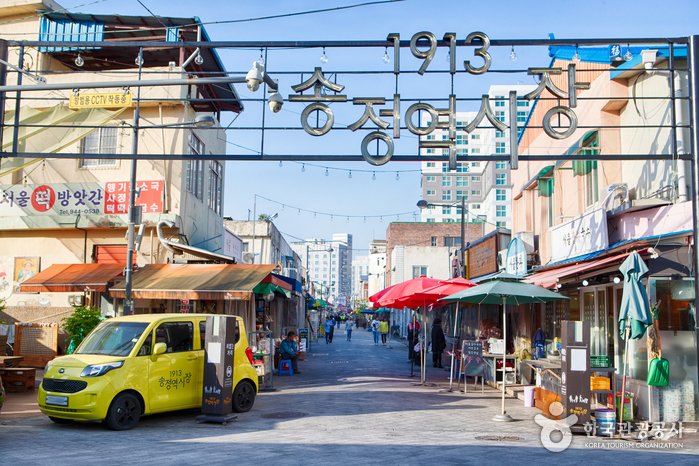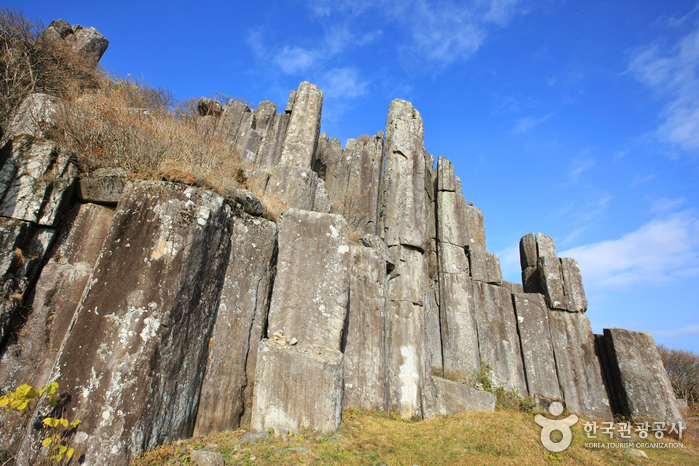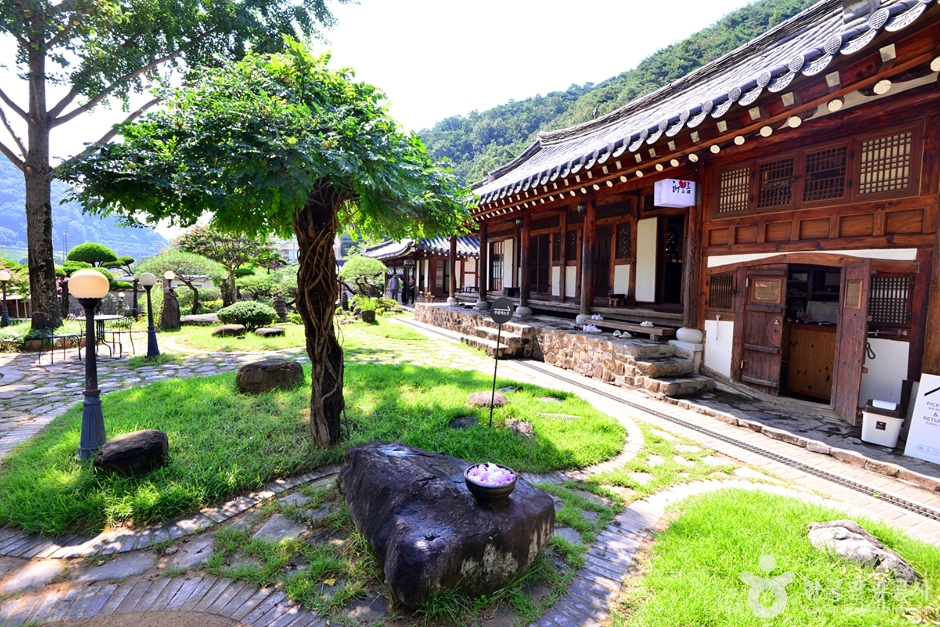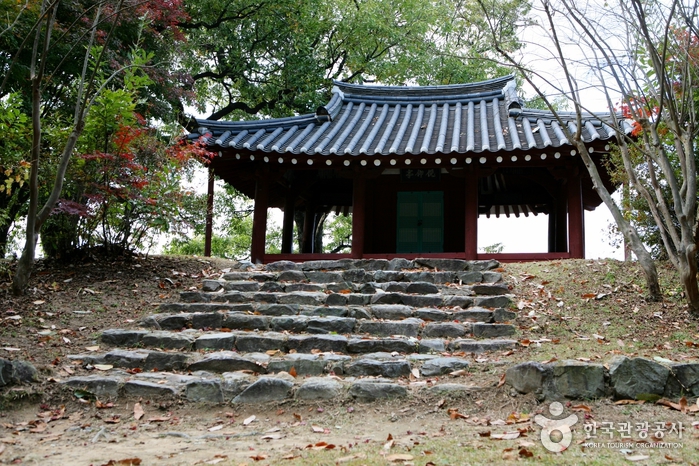Gwangju Aura Hotel [Korea Quality] / 광주 아우라 비즈니스 호텔 [한국관광 품질인증/Korea Quality]
10.9Km 11 2020-12-29
28, Songjeong-ro 1beon-gil, Gwangsan-gu, Gwangju
+82-62-942-0060
The Aura Hotel is a business hotel located just across from the KTX Songjeong Station. It provides excellent proximity and accessibility to various transportation facilities, as it is located 10 minutes from Gwangju Airport, 5 minutes from KTX Songjeong Station, 5 minutes from Gwangju Subway Songjeong Station, and 10 minutes from Gwangju 2sunhwan-ro. Also, Songjeong Tteokgalbi Special Street, 1913 Songjeong Old Market, and Songjeong 5-day Market are close to the hotel, allowing you to enjoy food and sightseeing conveniently. The luxurious room is equipped with cleanliness, cozy bedding, and a spacious bathroom, making it extra comfortable for all customers.
Olive Young - Gwangju Songjeong Station Branch [Tax Refund Shop] (올리브영 광주송정역)
11.0Km 0 2024-04-22
1F, 207, Sangmu-daero, Gwangsan-gu, Gwangju
-
1913 Songjeong Station Market (1913송정역시장)
11.1Km 5659 2023-11-28
13 Songjeong-ro 8beon-gil, Gwangsan-gu, Gwangju
+82-62-942-1914
Songjeong Station Market was opened in 1913 in connection with the opening of Gwangju-Songjeong Station. For many years, the market was the go-to-place for necessary items and produce, but with the increase of large supermarts in the 1990s, people began to visit traditional markets less and less. In order to increase the liveliness of Songjeong Station Market and showcase the difference between modern marts and a traditional market, the entire space was redesigned around the theme of time.
The newly redesigned 1913 Songjeong Station Market, located just across the street from Gwangju-Songjeong KTX Station, has a bright appearance with modern-styled architecture and signboards detailing the history of the various shops. Visitors can enjoy all the classic market foods here, such as hotteok (hot griddle cakes), gyeran bap (rice with egg), and eomuk (fish cake).
Jusangjeolli Cliff of Mudeungsan Mountain (무등산 주상절리대)
11.7Km 28509 2020-06-05
San 354-1, Yongyeon-dong, Dong-gu, Gwangju
+82-62-227-1187
The Jueangjeolli cliffs are rock pillars of various hexagonal shapes that seem as if they were hand carved. The Jusangjeolli cliffs of Mudeungsan Mountain consist of Seoseokdae, Ipseokdae, and Gyubong Rocks formed about 70 million years ago. Ipseokdae and Gyubong Rocks are both of a distinct pillar shape as they have been heavily weathered, and Seoseokdae, which was less weathered, looks like a folding screen. The Neodeolgeong (cluster of rocks), which sit on the mountain slope, were made when stone pillars collapsed. The standing rocks and Neodolgeong have been designated as Natural Monuments due to their rarity and uniqueness.
Damyang Changpyeong [Slow City] (담양군 창평면 [슬로시티])
11.8Km 12793 2021-04-16
56-24, Doldam-gil, Damyang-gun, Jeollanam-do
+82-2-383-3807
Damyang Changpyeong Samjinae Village is a farming village that produces vegetables and fruits including tomatoes and strawberries. The name of the village goes all the way back to early Goryeo period. Changpyeong is home to many important historical figures and known for its regional foods and local produce.
Kkotpineun Chunsamwol (꽃피는춘삼월)
11.8Km 0 2024-02-13
50 Seongyo-ro, Dong-gu, Gwangju
Kkotpineun Chunsamwol is a traditional Korean teahouse nestled in a picturesque hanok. It specializes in authentic Korean beverages and desserts. The teahouse's signature offering is ssanghwatang, an herbal tonic tea prepared with chestnuts, gingko, and nuts in a homemade decoction. Other popular items include Yennal Bingsu (shaved ice with grain and black sesame ice cream), and a nutty latte with bean powder. These beverages pair exceptionally well with traditional Korean sweets like yakgwa (honey cookie) and garaetteok gui (grilled rice cake stick), enhancing the overall culinary experience.
Damyang Changpyeong Samjinae Village [Slow City] (담양 창평 삼지내마을[슬로시티])
12.1Km 20930 2020-03-31
9-22, Doldam-gil, Damyang-gun, Jeollanam-do
+82-61-383-3807
Damyang Changpyeong Samjinae Village was the first Korean place designated as a slow city in 2007. Compared with the fast-changing city life, the village seeks a slow life, experiencing regional cultures and food, surrounded by nature. Visitors can make Korean traditional sweets & cookies such as Hangwa and Ssalyeot here.
Mudeungsan Mountain (무등산)
12.1Km 19971 2018-01-30
Nam-myeon, Damyang-gun & Dong-gu & Buk-gu, Gwangju & Iseo-myeon, Hwasun-gun, Jeollanam-do
82-61-379-3503
Mudeungsan covers an area of about 30 square meters above the metropolitan city of Gwangju, Hwasun-gun and the nearby Damyang-gun. The name means ‘a high mountain’ or, more mysteriously, a mountain beyond classification’.
Mudeungsan Mountain (무등산) is not too steep and many people come for a hike on the weekends or public holidays. Highlights on the way include the Seoseokdae, Ipseokdae, Seinbong and Gyubong Rocks, Wonhyo and Yongchu Valleys – as well as Jigong Neodeol (cluster of rocks) – and the Deoksan Neodeol. To enjoy a great view, try going up Jungmeorijae, Jangbuljae or the Donghwasa Temple Site, or the Jangwonbong Peak. Visitors coming from the Hwasun side of the mountain can see the picturesque Dongbokho Lake from Ipseokdae and Gyubong Rock, Jingong Neodeol, Jangbul, Baekma ridge and Gyubongam temple.
Myeonangjeong Pavilion (면앙정)
12.1Km 5959 2020-04-27
382-11 Myeonangjeong-ro, Damyang-gun, Jeollanam-do
+82-61-380-2811
Myeonangjeong Pavilion is located on the slopes of Jebongsan Mountain in Damyang-gun. The pavilion was constructed in 1533 by Song Sun (1493-1583), who built it as a place for writing poems. After its construction, the pavilion served as a meeting place for scholars and intellectuals and was even frequented by Lee Hwang (1501-1570), a representative Confucian scholar who is pictured on the 1,000 won bill.
The roof of Myeonangjeong Pavilion was originally made of reeds, straw, grass and other materials which could not withstand the elements. After several repairs, the building was developed into the wooden structure that it is today.
From the back of the pavilion, you can see the mountain range and open wide fields; renowned scholars’ poems are engraved on the wooden panels that decorate the pavilion walls.
Gotaekhanok [Korea Quality] / 고택 한옥에서 [한국관광 품질인증]
12.2Km 13704 2020-09-10
88-9, Doldam-gil Changpyeong-myeon, Damyang-gun, Jeollanam-do
+82-61-382-3832
Hanok Pension is an old traditional Korean house located in Samjinae Village, Changpyeong-myeon, Damyang-gun, the first village in Asia to be listed as a 'Slow Village.' It has 15 guestrooms in traditional Korean house buildings along a stone-wall road just like in the old days in Korea. The guesthouse is conveniently located for those planning to visit Juknokwon (Bamboo Garden) and Metasequoia Street, which is regarded as the most beautiful street in Korea, because they are all within 30 minutes away from the guesthouse on foot. The old traditional Korean house consists of one main building and two detached buildings, between which is a large front yard. The two detached buildings are divided into different sections for the guests to stay in. You will see lots of different wild flowers in and around the premises. The tea room is another popular feature of the guesthouse because of the calming atmosphere.
![Gwangju Aura Hotel [Korea Quality] / 광주 아우라 비즈니스 호텔 [한국관광 품질인증/Korea Quality]](http://tong.visitkorea.or.kr/cms/resource/66/2698566_image2_1.jpg)
![Olive Young - Gwangju Songjeong Station Branch [Tax Refund Shop] (올리브영 광주송정역)](http://tong.visitkorea.or.kr/cms/resource/88/2886988_image2_1.jpg)




![Damyang Changpyeong Samjinae Village [Slow City] (담양 창평 삼지내마을[슬로시티])](http://tong.visitkorea.or.kr/cms/resource/56/898356_image2_1.jpg)

![Gotaekhanok [Korea Quality] / 고택 한옥에서 [한국관광 품질인증]](http://tong.visitkorea.or.kr/cms/resource/25/2580225_image2_1.jpg)
 English
English
 한국어
한국어 日本語
日本語 中文(简体)
中文(简体) Deutsch
Deutsch Français
Français Español
Español Русский
Русский